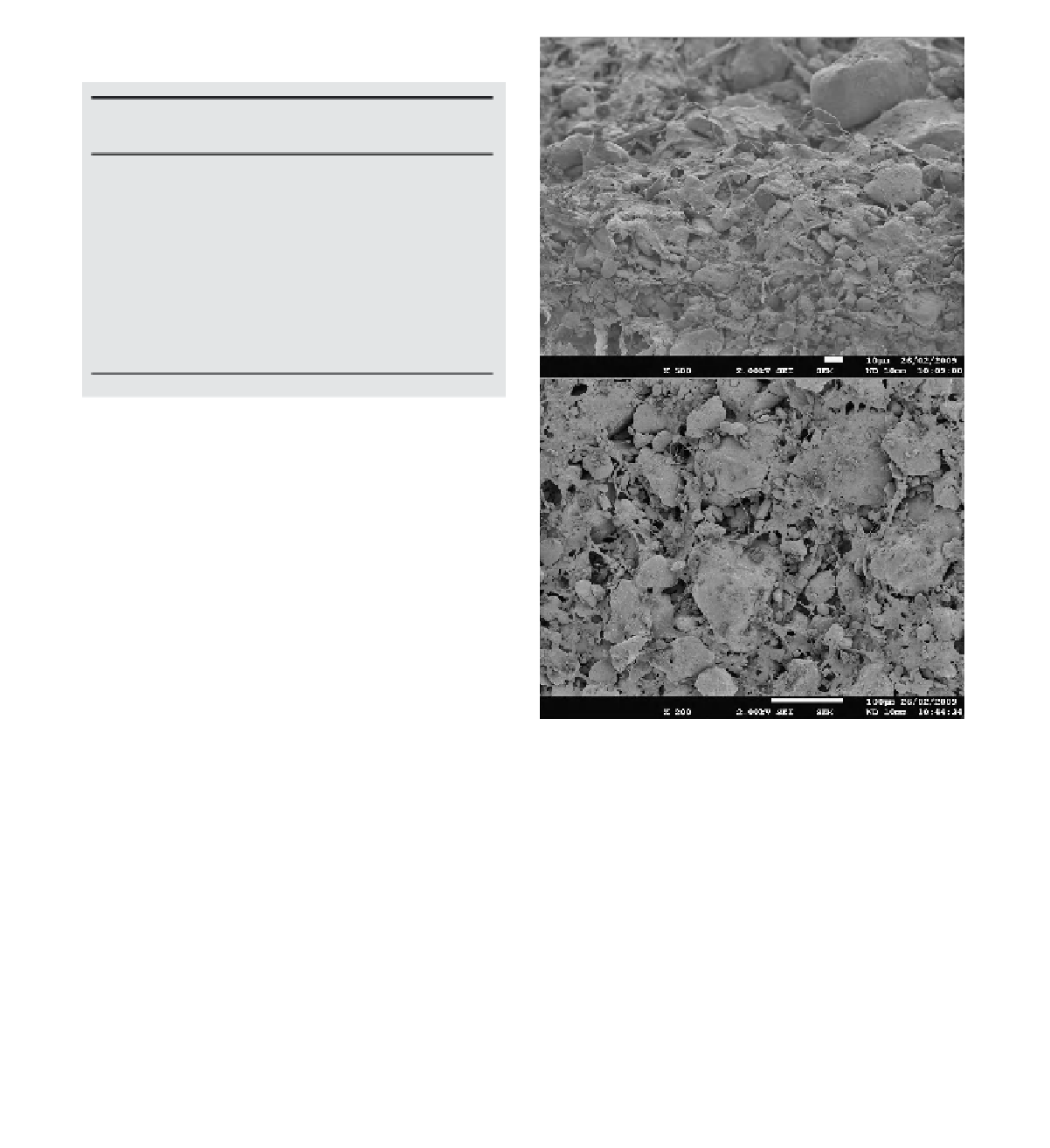Geoscience Reference
In-Depth Information
Table 7.2
The major groups of organisms found in biological
soil crusts (after Evans and Johansen, 1999).
(a)
Species that are commonly
found in BSCs
Organism group
Cyanobacteria
Microcoleus vaginatus
Nostoc commune
Schizothrix calcicola
Lichens
Collema tenax
Fulgensia desertorum
Psora decipiens
Catapyrenium squamulosum
Mosses
Tortula ruralis
Pterygoneurum ovatum
Bryum
spp.
(b)
cyanobacteria and fungi (e.g. yeasts, moulds, mycorrhizal
fungi). A review of BSCs and their ecosystem roles (Evans
and Johansen, 1999) concluded that a relatively small
group of cosmopolitan species commonly dominate, with
many other taxa being localised or quite rare. The common
dominants are listed in Table 7.2, following Evans and
Johansen (1999).
In the upper few mm of many soils, the mineral parti-
cles are permeated by a mesh of biological filaments of
various kinds, produced by these organisms (Figures 7.5
and 7.6). These include the polysaccharide sheaths that
enclose the multicellular cyanobacterial filaments, the
rhizoids of mosses and fungal hyphae associated with
lichens. Cyanobacterial sheaths release secretions that in-
clude glucose, mannitol, arabinose and galactose (Zhang,
2005), which bind adjacent soil particles into aggregates
that include the sheath as a kind of structural element.
Given that the cyanobacterial filaments extend from their
sheaths when the soil is wet and grow towards the soil
surface (Belnap, Prasse and Harper, 2001), the filamen-
tous binding elements can permeate the uppermost soil,
producing a crust that can with care be separated from the
deeper soil without breaking. The filaments are entangled
with the soil particles, and this adds to the aggregation
caused by the exudates already referred to. The binding
effect of the algal filaments can remain for some time even
if the organisms are dead.
Some soil crust organisms can fix atmospheric nitro-
gen, converting atmospheric N
2
to ammonia (NH
4
+
), and
release much of this into the surrounding soil, together
with significant amounts of carbon. Estimates of the flux
of nitrogen to the soil vary widely, but values in the range
1-10 kg/ha a are common, and it has been suggested that
Figure 7.5
Scanning electron micrographs of soil particles
stabilised by the exudates of soil algae: (a) part of a soil
surface showing extensive drapes; (b) section of the upper-
most mm of the soil showing particles linked by bridges and
necks. Note the differing scale bars on the two images. Soils
from western NSW, Australia. Images by the Monash Centre for
Electron Microscopy.
may contribute significantly to the recovery of soil fertility
following drought (Aranibar
et al.
, 2003).
7.5.8
The classification of biological soil crusts
Owing to their wide taxonomic diversity and range of
structural forms, a system for classifying BSCs is very
necessary. The classification of Belnap (2006) is widely
cited, though it offers no distinction among different forms
of very common cyanobacterial crust, for example. More-

